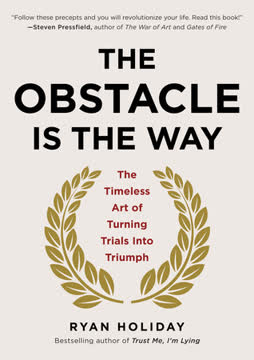Key Takeaways
1. Embrace the Spirit of Motivational Interviewing: Partnership, Acceptance, Compassion, Evocation
"The Spirit of MI is currently summed up with the four words; 'Partnership,' 'Acceptance,' 'Compassion,' and 'Evocation.' Another word to sum up the Spirit is 'Respect.'"
Partnership and respect. Motivational Interviewing (MI) begins with a fundamental attitude of respect for the client. This means viewing the client as an equal partner in the process, recognizing their wisdom, knowledge, and ability to make decisions about their own life. The practitioner's role is not to be an expert who persuades, but a collaborator who explores the client's own motivation and solutions.
Acceptance and compassion. Acceptance in MI involves four key aspects: absolute worth, accurate empathy, autonomy support, and affirmation. This means valuing the client unconditionally, striving to understand their perspective, supporting their right to make their own choices, and recognizing their strengths and efforts. Compassion involves prioritizing the client's needs and well-being above all else.
Evocation, not imposition. The spirit of MI emphasizes drawing out the client's own motivations and solutions, rather than imposing them from the outside. This approach recognizes that clients already possess wisdom, knowledge, and motivation, and the practitioner's role is to help uncover and amplify these internal resources.
2. Master the OARS Skills: Open Questions, Affirmations, Reflections, Summaries
"The specific MI tools and techniques that are recommended for the beginning of a session include the micro-skills of MI, namely, Open questions (sometimes called open-ended questions), Affirmations, Reflections, and Summaries. (The acronym for remembering the micro-skills is: OARS.)"
Open questions. These invite clients to elaborate and explore their thoughts and feelings, rather than eliciting simple yes/no answers. Examples include:
- "What brings you here today?"
- "How does alcohol fit into your life?"
- "What are your main concerns about your current situation?"
Affirmations. These acknowledge the client's strengths, efforts, and positive behaviors, helping to build confidence and engagement. Examples:
- "You've shown a lot of persistence in trying to quit smoking."
- "Your commitment to your health is admirable."
Reflections. These involve mirroring back to the client what you think they mean, both in terms of content and emotion. Reflections can be simple (repeating or rephrasing) or complex (paraphrasing, double-sided reflections, metaphors). They demonstrate understanding and encourage further exploration.
Summaries. These are longer reflections that pull together multiple elements of what the client has said. They can be used to transition between topics, reinforce change talk, or check understanding.
3. Engage Clients and Focus on Their Agenda
"The beginning of a session is important for setting the tone for working with your client. Goals of the first few minutes certainly include establishing rapport and engaging your client."
Client-centered approach. Engagement is the first process of MI and involves establishing a mutually trusting and respectful helping relationship. This starts with setting the tone of the session by expressing appreciation for the client's presence, explaining your role, and inviting the client to share their concerns and expectations.
Collaborative agenda setting. While you may have certain tasks or information to cover, it's crucial to prioritize the client's agenda. This can be done by:
- Asking open questions about what the client wants to discuss
- Presenting a menu of options within your scope of practice
- Acknowledging any mandated topics while still giving the client as much autonomy as possible
Avoiding disengagement. Certain behaviors can hinder engagement and should be avoided early in the session:
- Asking too many questions, especially closed ones
- Being the "expert" and offering premature advice or solutions
- Labeling the client
- Assigning blame
- Engaging in unproductive small talk
4. Recognize and Elicit Change Talk
"Change talk is simply client speech that favors movement in the direction of behavior change or, to put it another way, clients' own arguments for change."
Types of change talk. The acronym DARN-C helps remember the five main types:
- Desire: "I want to...", "I wish..."
- Ability: "I can...", "I'm able to..."
- Reasons: "It would be better if...", "I'd have more energy if..."
- Need: "I need to...", "I have to..."
- Commitment: "I will...", "I plan to..."
Strategies to elicit change talk. Several techniques can be used:
- Asking evocative questions: "Why would you want to make this change?"
- Asking for elaboration: "Tell me more about how you've overcome difficulties in the past."
- Querying extremes: "What's the best thing that could happen if you made this change?"
- Looking back: "What were things like before this problem developed?"
- Looking forward: "How would you like your life to be different in five years?"
- Exploring goals and values: "How does your current behavior fit with your values?"
Reinforcing change talk. When you hear change talk, reflect it back to the client. This reinforces the client's own arguments for change and often leads to more change talk.
5. Explore and Resolve Ambivalence
"Ambivalence just means feeling two ways about a decision or a potential change in behavior. Ambivalence is wanting and not wanting something or wanting two incompatible things at the same time."
Nature of ambivalence. Ambivalence is a normal part of the change process. It involves conflicting motivations both for and against change. Many people get stuck in this state, which can be anxiety-producing and lead to avoidance of decision-making.
Techniques for exploring ambivalence:
- Double-sided reflections: Reflect both sides of the client's ambivalence in one statement
- Decisional balance: Explore pros and cons of changing and not changing
- Scaling questions: Ask about importance and confidence in making a change
- Exploring values and goals: Highlight discrepancies between current behavior and personal values
Resolving ambivalence. The goal is not to argue for change but to help the client explore and resolve their own ambivalence. By amplifying the discrepancy between current behavior and personal values or goals, you can create motivation for change. Allow the client to sit with the discomfort of ambivalence long enough for them to begin tipping the balance toward healthy behavior change.
6. Address Discord, Not Resistance
"Discord is different from sustain talk and includes 'disagreement, not being on the same wavelength, talking at cross-purposes, or a disturbance in the relationship.'"
Shift in perspective. MI has moved away from the concept of "resistance" as a client characteristic and instead focuses on "discord" in the relationship. This view empowers practitioners to modify their approach when faced with challenges.
Recognizing discord. Signs of discord include:
- Feeling like you're arguing or wrestling with the client
- The client giving a "spreadsheet of excuses"
- Feeling that you're working harder than the client
- Experiencing frustration, stress, or burnout
Addressing discord. When discord arises:
- See it as a signal that you may be moving too fast or misaligned with the client
- Back off and examine your approach
- Return to the basics of MI: express empathy, avoid arguing, and engage in reflective listening
- Acknowledge the client's autonomy
- Consider shifting focus to a topic the client is more willing to discuss
7. Guide Clients Towards Commitment and Change Plans
"The commitment to a change plan completes the formal cycle of motivational interviewing."
Summarize and ask key questions. When the client seems ready for change:
- Summarize the change talk you've heard throughout the session
- Ask a key question to move into planning, such as:
- "What's your next step?"
- "Where do you see yourself going from here?"
- "How are you going to do it?"
Develop a change plan. Use the SMART goal-setting framework:
- Specific: Focus on exactly what the client wants to do
- Measurable: Establish clear methods to track progress
- Attainable: Ensure the goal is within reach
- Realistic: Make sure the goal is doable given the client's current situation
- Timely: Set a clear timeframe for accomplishing the goal
Elicit commitment. Ask for a clear statement of commitment to the change plan. If the client seems reluctant, explore their concerns further.
End with appreciation. Express gratitude for the client's hard work, acknowledge their efforts, and offer encouragement for pursuing their goals.
8. Practice and Learn from Your Clients
"There is only one way to really learn how to do MI and that is by trying it with your clients and letting your clients teach you how to do it."
Continuous learning. Motivational Interviewing is a skill that improves with practice. While books, workshops, and videos provide a foundation, the best teachers are your clients themselves.
Client feedback. Pay attention to your clients' responses:
- Engagement: Are they comfortable and doing most of the talking?
- Change talk: Are you hearing increasing amounts of change talk?
- Discord: Do you sense any misalignment or resistance?
- Flow: Does the conversation feel smooth or disjointed?
Self-reflection. Regularly assess your own performance:
- Are you maintaining the spirit of MI?
- Are you using OARS skills effectively?
- Are you avoiding roadblocks and discord-producing behaviors?
- Are you becoming too directive too early?
Ongoing development. Consider additional training options:
- Advanced workshops
- Individual or group supervision
- Coaching sessions
- Continued reading and study
Remember, the key to mastering MI is to remain open to learning from each client interaction, continuously refining your skills based on the feedback you receive in sessions.
Last updated:
Review Summary
How to Do Motivational Interviewing is praised as a concise, practical guide to MI techniques. Readers appreciate its brevity and focus on essential skills. Many find it helpful for beginners and as a quick reference. The book is commended for clearly explaining MI principles and providing useful examples. Some reviewers note its effectiveness in therapy and counseling settings. While most find it valuable, a few mention it lacks depth for those seeking more comprehensive information. Overall, it's well-received as an accessible introduction to MI, particularly for its straightforward approach and immediate applicability.
Similar Books










Download PDF
Download EPUB
.epub digital book format is ideal for reading ebooks on phones, tablets, and e-readers.




